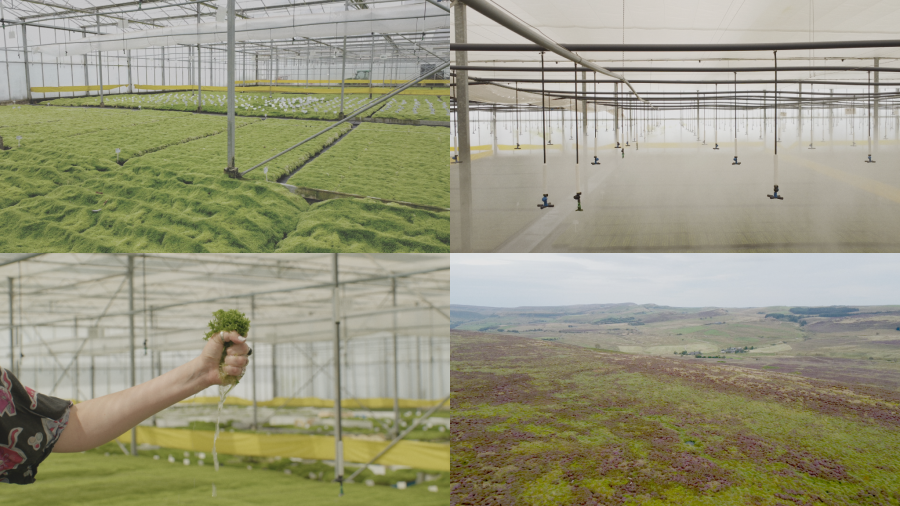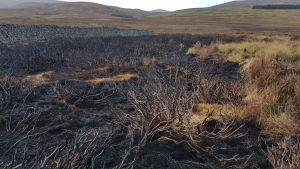'The most important plant in the world' is the first in a series of short films commissioned by the IUCN UK Peatland Programme and created by the artist Caroline Vitzthum. The film series is collectively titled 'Sphagnum Portraits' and brings together ambitious works undertaken by individuals, environmental charities, and community groups to help share the importance of peatlands and engage in restoring damaged sites across the country.
Jane Akerman, IUCN UK Peatland Programme Manager, says,
“We are always seeking new ways to engage diverse audiences with peatlands, and it has been inspiring to work with Caroline to develop the 'Sphagnum Portraits' concept and engage in a creative endeavour. 'The most important plant in the world' tells the story, not only of Sphagnum and its importance for peatlands, but of a family business and restoration partnership both rooted in the desire to make a difference.”

Stills from 'The most important plant in the world'
'The most important plant in the world' premiered at the IUCN UK Peatland Programme’s 'Peatlands, People, and Nature' conference in Aviemore in September 2024. The film portrays the collective efforts between Moors for the Future Partnership, who have been delivering a landscape-scale programme of blanket bog restoration across the Peak District and South Pennine Moors since 2003, and BeadaMoss, a family-run nursery based in the East Midlands in England, to re-introduce Sphagnum moss to a peatland site in the Peak District, which suffered from a severe wildfire in 2018.
BeadaMoss specialises in micro-propagating Sphagnum moss for large-scale peatland restoration projects across the UK and Europe, thereby partnering with various environmental charities across Europe. Small quantities of Sphagnum moss are collected from the damaged site and micro-propagated under controlled conditions in the greenhouses at BeadaMoss, which are then taken out onto the moor for plug-planting as a form of gradually re-vegetating the damaged site.
Joe Margetts, Senior Science and Monitoring Officer at Moors for the Future Partnership, said,
“We were delighted to take Caroline to the Roaches, and show her how the work we have done reintroducing Sphagnum is helping to repair the damage caused by a wildfire in 2018. Sphagnum that was planted less than a year ago is already establishing itself and bringing life back to this fire-scarred landscape.”
Film-maker Caroline Vitzthum said,
“Spending time observing, listening, and learning about all the many small steps that contribute to the partnering between BeadaMoss and the Moors for the Future Partnership has been invaluable. I feel grateful to have been given an insight into their unique approach towards restoring damaged peatlands and shall carry forward their enthusiasm for these precious ecosystems. A special thank you to the IUCN UK Peatland Programme, without whose support, both financially and beyond, this project could not have been brought to life!”
View and share the film via the IUCN UK Peatland Programme’s YouTube channel.










